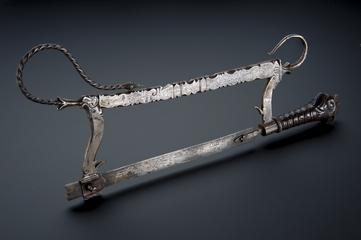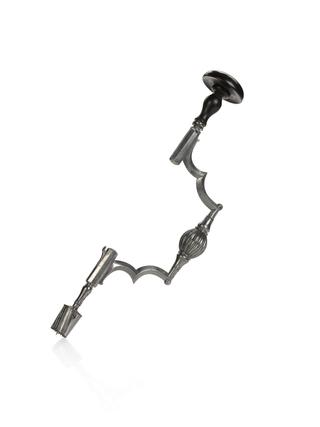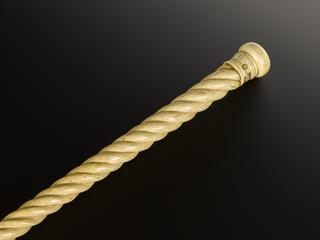
Tie pin surgically removed at Charing Cross Hospital, London, England, 1918
- Made:
- 1900-1918 in United Kingdom




Alloy and cut glass tie pin, surgically extracted from a stomach at Charing Cross Hospital in 1918, English, 1900-1918
Made of metal and glass, this tie pin was swallowed by a child who was taken to Charing Cross Hospital in London on the evening of 11 September 1918. After examining the throat nothing was found. Fortunately, a quarter of an hour later the child vomited up the pin. Some children seem unable to avoid the temptation to experiment in this way at some point in their lives and today such visitors to hospital accident and emergency departments are by no means a rarity.
The pin was donated to the Wellcome collections in 1930 by Claude E Woakes, a laryngologist, and is one of a number of ‘surgically removed objects’ which are held in the medical collections.
Details
- Category:
- Surgery
- Collection:
- Sir Henry Wellcome's Museum Collection
- Object Number:
- A650799
- Materials:
- cardboard, copper (alloy), glass, twine, paper (fibre product) and steel (metal)
- Measurements:
-
overall (box): 27 mm x 65 mm x 135 mm, .02 kg
- type:
- foreign body and tie pin




